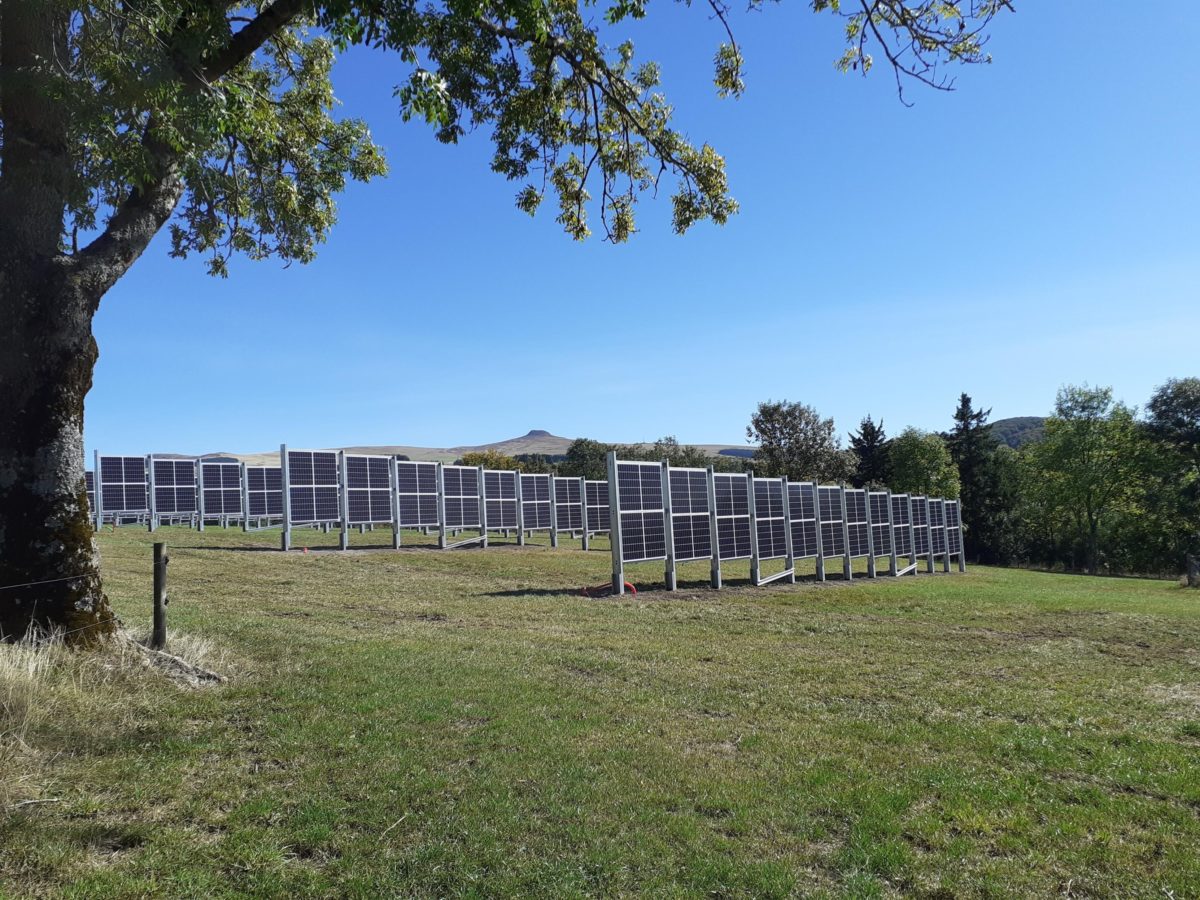From pv magazine France
Engie and the French National Research Institute for Agriculture, Food and the Environment (INRAE) have inaugurated the Camelia vertical agrivoltaic pilot in central France.
The project features 252 vertical bifacial panels, oriented east/west, with an installed power of 89 kW and an expected annual production of 100 MWh. The nine vertical rows are spread over 1 hectare and are spaced 12 meters and 18 meters apart. The installation is equipped with a simple, modular and reversible anchoring system, to minimize its impact on agriculture.
Engie invested €1 million ($0.98 million) in the project. It aims to study the impact of vertically installed bifacial PV modules on grasslands and electricity production.
Camelia is installed on a plot of land that belongs to INRAE. It is also equipped with 50 sensors for agronomic and meteorological monitoring.
“The Camelia project makes it possible to address original research questions in agrivoltaics, such as the effect of the construction site on soil compaction, the effects of vertical panels on the microclimate of the meadow and on the animals,” said INRAE President Emmanuel Hugo. “The response of the grassland will be compared with a control grassland in the immediate vicinity of the site.”
The pilot project also involves a local dairy producer, whose electricity needs are partly covered by Camelia.
This content is protected by copyright and may not be reused. If you want to cooperate with us and would like to reuse some of our content, please contact: editors@pv-magazine.com.




$11/w. Nuff said. Oh, one more thing to be said: impact? You could conduct an impact study by putting up plywood.
I would like to follow this interesting project.
I would like to get more info about this project and its outcome.